Maybe it’s just me, but I often find photographing the little things more rewarding artistically than photographing the grand landscapes. I know that these small intimate scenes aren’t as attractive or appealing as the big bold landscape photographs and that’s completely understandable. Most people want easy to understand images, those that speak clearly and are obvious and of course simplistically pretty. Often the intimate scenes are a bit more to process mentally and may not be as initially visually stimulating. It’s only after some thoughtful study that the little things become more beautiful than the obvious, dare I say superficial, photographs. These little things are a subject matter that I’ve sought out in my photography career, partly for the satisfaction I receive from creating the images, but also practicing intimate nature photography has helped me compose and create larger more dynamic photographs.
We all love shots like this one I created recently on Bandon Beach in Oregon. It’s a pretty shot and one that I am proud to have in my collection. 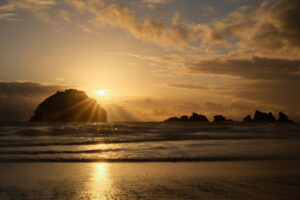 Great interest and drama in the sky, at a beautiful location, the ocean and the reflective sand…it’s got it all. It’s a big, grand photograph that is very pretty and should be appreciated by those that view it. But for me, it’s not that rewarding artistically. It didn’t require any great insight, skill or effort for me to create. I was leading a workshop and had the group with me and my advice to them was “f/22 and be there for the sunstar”. That’s the extent of the technical skills needed and the only thing left for me as the photographer to do was compose the scene so I didn’t cut off any of the sea stacks. A fairly easy task.
Great interest and drama in the sky, at a beautiful location, the ocean and the reflective sand…it’s got it all. It’s a big, grand photograph that is very pretty and should be appreciated by those that view it. But for me, it’s not that rewarding artistically. It didn’t require any great insight, skill or effort for me to create. I was leading a workshop and had the group with me and my advice to them was “f/22 and be there for the sunstar”. That’s the extent of the technical skills needed and the only thing left for me as the photographer to do was compose the scene so I didn’t cut off any of the sea stacks. A fairly easy task.
We are taught to chase the amazing light, be on location from blue hour through golden hour and twilight….focused on capturing amazing light with our subject. All this is good, but it starts to condition us photographers, and viewers, that amazing light and color are the things that make images great. If you are a chaser of magical light, that’s great, but let me ask, where is the artistry? If your effort and skill is measured by weather forecasting, how far you hiked to get to a mega-location, etc…then is that something to hang your “artist/photographer” hat on, or is that more adventuring? I’m not one to pass judgement on any of this, I just want to juxtapose the “magical light” of grand landscapes with the artistic satisfaction of photographing the little things.

Little Things
When I create a successful photograph of a little thing, an intimate nature scene, I find that I often have much more satisfaction as an artist in the finished product. Here are a couple of reasons that I’ve identified as bringing this satisfaction.
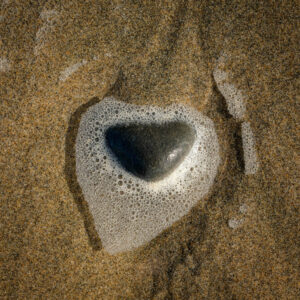 Vision
Vision
Oftentimes, the little things are just that, little, and it takes a practiced eye and slowing down to find intimate scenes to photograph. So some of what I feel is a bit of pride (I’m not afraid to admit that lol) in my vision and ability to identify and visualize possible photographs amidst the larger, often chaotic, landscape around me. The photograph above of the kelp and sea foam, this again was on the famous Bandon Beach with an amazing view just offshore. Because I slowed down, I was able to move my eyes from the grand scene and look down at the beach, scanning for possible intimate photographs. I came across this kelp and just knew it would make for a fantastic intimate nature photograph.
Skill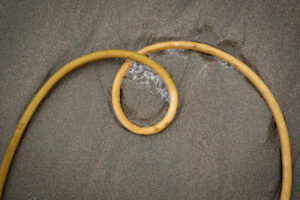
I’ve found over the years that sometimes the smaller and simpler photographs can take more skill to execute than the larger grand scenes. As I am working in a smaller area, small movements or camera adjustments can have profound impacts on the outcome of the image. Depth of field being the most obvious one and how when working close to a subject, your objective DoF becomes smaller, so choice of aperture is even more critical than in a larger scene with deeper DoF. Plus, the art of composition, to me, needs to be more refined when photographing the little things. Angles, shapes, tonality all are critically important in a small scene with only a few elements in the shot. In contrast, larger scenes are easier to compose, with most folks putting on a wide angle lens and including most of the scene before them. In this image of the kelp loop, I spent a lot of time and effort to compose this shot, believe it or not. Considering where the top of the arc fit in the frame, where do each strand exit the frame at the bottom, what angle should my camera be, etc. It took an thoughtful effort on my part to craft the composition to the point that I was happy. Again, it is a source of pride that I could take a small object, perhaps a mundane item, and create a pleasing photograph out of it.
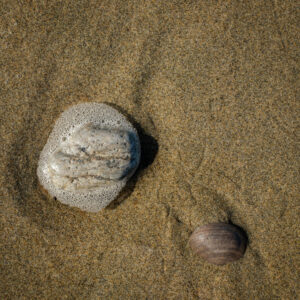 More Connective
More Connective
I’ve always felt that the smaller the scene, the more connective it can be with a viewer. As a photographer, you are bringing the viewer in to a world that they might not otherwise see. It’s through your vision and skill that you are transporting them to a small window to the world. You’ve removed the chaos of the surroundings and brought them to an amazing view of something that quite honestly most people would just step over as they watch the sunset. You open up a “new” world for lots of folks and you are their tour guide showing them the wonder around us. Often these little things require the viewer to also slow down to appreciate, which goes to my above point that these images might not be as “popular” because someone needs to slow down and process them, which is hard to do in this crazy busy world.
More Intriguing
Maybe it’s just me, but when someone opens up a new viewpoint to me, I can be captivated and intrigued by what I see. I feel the same is true with photographs of little things…we can intrigue and cause a sense of wonder for those who view our images. And by being more intriguing, people may view our images longer, deepening their appreciation for the subject and composition.
Development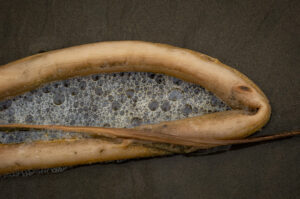
Seeing and shooting these little scenes can be challenging as an artist to create a composition that is appealing over something that could be quite small. Over the years I’ve found that practicing shooting the little things has increased my overall photographic skill level and that increased skill helps me to compose and create images in the wider landscape. My ability to “see” subtle tonalities, to envision how the eye travels, to balance colors and lights/darks…those are all skills honed shooting small scenes that have improved my overall photography. So besides artistic enjoyment, I find that my interest is doubled in shooting the little things because I know it will help me no matter what I choose to shoot in the future.
As I encouraged my workshop participants last week to LOOK DOWN, I encourage you to do the same. Pay attention to the little things around you for possible photographs. You will need to slow down and work to filter out the larger scene around you but trust me, it will pay off in so many ways for your photography.
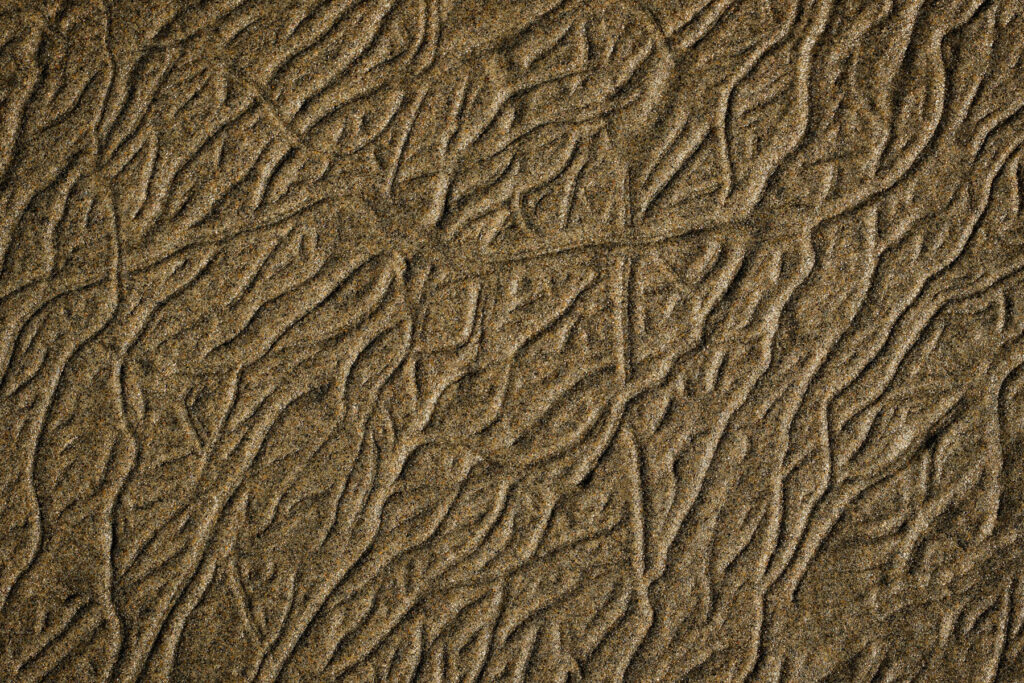


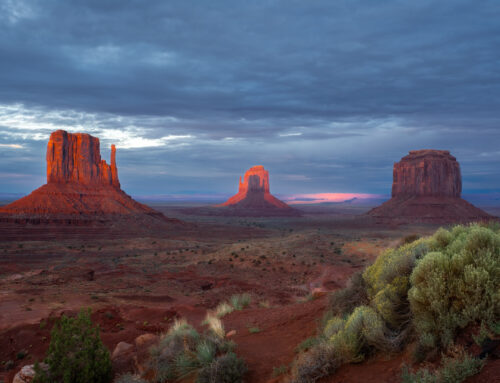
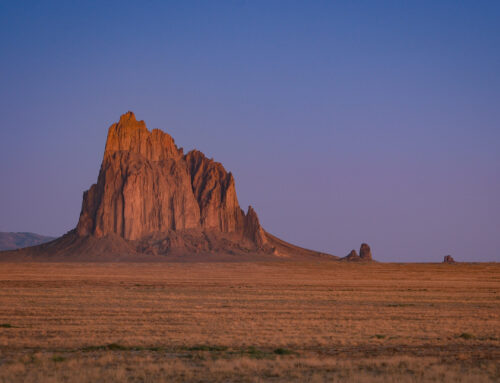
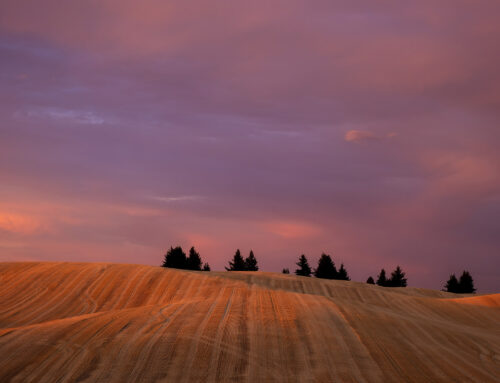
Leave A Comment